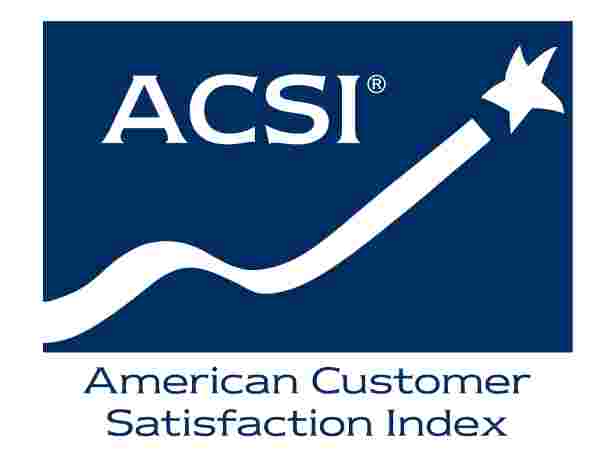
by Kevin Grech | March 11, 2019
H.R. 5759 (signed December 20th, 2018) will have a profound effect on how federal agencies deliver services to customers (i.e., the American public). The law requires agencies to modernize all public-facing websites, digitize government services, and enable electronic signatures.
In order to prioritize modernization development, agencies are expected to measure customer satisfaction and the website experience. H.R. 5759 requires agencies to use "qualitative and quantitative data obtained from across the executive agency relating to the experience and satisfaction of customers," to "identify areas of concern that need improvement."
Agency websites must comply with H.R. 5759 by June 2019, and each agency will be required to report its web priorities to OMB by the end of the year. These updates will also be publicly available.
If you manage a website at your agency, start by implementing a qualitative and/or quantitative customer feedback program. This will help prioritize your website improvement road map and provide the customer experience metrics needed to comply with H.R. 5759.
BACKGROUND ON H.R. 5759
The law is officially titled “H.R. 5759 (115th): 21st Century Integrated Digital Experience Act,” but can also be cited as the “21st Century IDEA.” It’s meant to, “improve executive agency digital services, and for other purposes.”
The bill was first introduced by U.S. Representative Ro Khanna (D-CA) on May 10, 2018, followed by a similar bill introduced by U.S. Senator Robert Portman (R-OH) on June 12, 2018. The two bills quickly gained bipartisan support and became identical bills. H.R. 5759 was passed by the Senate on December 11, 2018 and signed into law by President Trump on December 20, 2019.
FOUR MAIN COMPONENTS OF THE LAW
There are four main components to the law that will impact how agencies executives will manage their websites.Website Modernization
- Starting December 20, 2018, all agency websites must comply with GSA’s TTS.
- By June 18, 2019, new agency websites must follow certain guidelines:
- - 508 (29 U.S.C. 794d) compliance;
- - Consistent appearance;
- - No overlap with other sites;
- - Easy search function;
- - Industry-standard secure connection;
- - User-focused, efficient, accurate; and
- - Mobile-friendly.
- By December 20, 2019, agencies must provide a list of prioritized websites requiring modernization, along with cost and schedule estimates, and report progress to OMB Director Mick Mulvaney (or Acting Director Russell Vought). A publicly-available report must also be published.
- By June 18, 2019, the OBM Director will issue process guidance to each agency for identifying, prioritizing, budgeting, and scheduling improvements to non-digital services.
- Agencies must offer public services in a digital format, document the services that cannot be made available in a digital format, and ensure that all digital services can also be completed through a non-digital processes.
- Agencies must submit a plan to the OMB Director for accelerated use of electronic signatures per the Electronic Signatures in Global and National Commerce Act (15 U.S.C. 7001).
Agency CIOs must:
- Align all agency customer experience programs and strategy;
- Ensure proper funding to implement the Act;
- Provide guidance and best practices;
- Use qualitative and quantitative customer satisfaction data to identify improvement areas;
- Ensure websites are mobile-friendly (section 3559 of title 44); and
- Coordinate with other agencies to seek standardization and commonality.
H.R. 5759 (115TH): 21ST CENTURY INTEGRATED DIGITAL EXPERIENCE ACT
Source: https://www.congress.gov/bill/115th-congress/house-bill/5759/textONE HUNDRED FIFTEENTH CONGRESS OF THE UNITED STATES OF AMERICA
AT THE SECOND SESSION
Begun and held at the City of Washington on Wednesday, the third day of January, two thousand and eighteen
AN ACT
To improve executive agency digital services, and for other purposes.
SECTION 1. SHORT TITLE.
This Act may be cited as the “21st Century Integrated Digital Experience Act” or the “21st Century IDEA”.SEC. 2. DEFINITIONS.
In this Act:(1) DIRECTOR.—The term “Director” means the Director of the Office of Management and Budget.
(2) EXECUTIVE AGENCY.—The term “executive agency” has the meaning given the term “Executive agency” in section 105 of title 5, United States Code.
SEC. 3. WEBSITE MODERNIZATION.
(a) Requirements For New Websites And Digital Services.—Not later than 180 days after the date of enactment of this Act, an executive agency that creates a website or digital service that is intended for use by the public, or conducts a redesign of an existing legacy website or digital service that is intended for use by the public, shall ensure to the greatest extent practicable that any new or redesigned website, web-based form, web-based application, or digital service—
(1) is accessible to individuals with disabilities in accordance with section 508 of the Rehabilitation Act of 1973 (29 U.S.C. 794d);
(2) has a consistent appearance;
(3) does not overlap with or duplicate any legacy websites and, if applicable, ensure that legacy websites are regularly reviewed, eliminated, and consolidated;
(4) contains a search function that allows users to easily search content intended for public use;
(5) is provided through an industry standard secure connection;
(6) is designed around user needs with data-driven analysis influencing management and development decisions, using qualitative and quantitative data to determine user goals, needs, and behaviors, and continually test the website, web-based form, web-based application, or digital service to ensure that user needs are addressed;
(7) provides users of the new or redesigned website, web-based form, web-based application, or digital service with the option for a more customized digital experience that allows users to complete digital transactions in an efficient and accurate manner; and
(8) is fully functional and usable on common mobile devices.
(b) Requirements For Existing Executive Agency Websites And Digital Services.—Not later than 1 year after the date of enactment of this Act, the head of each executive agency that maintains a website or digital service that is made available to the public shall—
(1) review each website or digital service; and
(2) submit to Congress a report that includes—
(A) a list of the websites and digital services maintained by the executive agency that are most viewed or utilized by the public or are otherwise important for public engagement;
(B) from among the websites and digital services listed under subparagraph (A), a prioritization of websites and digital services that require modernization to meet the requirements under subsection (a); and
(C) an estimation of the cost and schedule of modernizing the websites and digital services prioritized under subparagraph (B).
(c) Internal Digital Services.—The head of each executive agency shall ensure, to the greatest extent practicable, that any Intranet established after the date of enactment of this Act conforms to the requirements described in subsection (a).
(d) Public Reporting.—Not later than 1 year after the date of enactment of this Act and every year thereafter for 4 years, the head of each executive agency shall—
(1) report annually to the Director on the progress of the executive agency in implementing the requirements described in this section for the previous year; and
(2) include the information described in paragraph (1) in a publicly available report that is required under another provision of law.
(e) Compliance With United States Website Standards.—Any website of an executive agency that is made available to the public after the date of enactment of this Act shall be in compliance with the website standards of the Technology Transformation Services of the General Services Administration.
SEC. 4. DIGITIZATION OF GOVERNMENT SERVICES AND FORMS.
(a) Non-Digital Services.—Not later than 180 days after the date of enactment of this Act, the Director shall issue guidance to the head of each executive agency that establishes a process for the executive agency to—
(1) identify public non-digital, paper-based, or in-person Government services; and
(2) include in the budget request of the executive agency—
(A) a list of non-digital services with the greatest impact that could be made available to the public through an online, mobile-friendly, digital service option in a manner that decreases cost, increases digital conversion rates, and improves customer experience; and
(B) an estimation of the cost and schedule associated with carrying out the modernization described in subparagraph (A).
(b) Services Required To Be Digital.—The head of each executive agency shall regularly review public-facing applications and services to ensure that those applications and services are, to the greatest extent practicable, made available to the public in a digital format.
(c) Forms Required To Be Digital.—Not later than 2 years after the enactment of this Act, the head of each executive agency shall ensure that any paper based form that is related to serving the public is made available in a digital format that meets the requirements described in section 3(a).
(d) Non-Digitizable Processes.—If the head of an executive agency cannot make available in a digital format under this section an in-person Government service, form, or paper-based process, the head of the executive agency shall document—
(1) the title of the in-person Government service, form, or paper-based process;
(2) a description of the in-person Government service, form, or paper-based process;
(3) each unit responsible for the in-person Government service, form, or paper-based process and the location of each unit in the organizational hierarchy of the executive agency;
(4) any reasons why the in-person Government service, form, or paper-based process cannot be made available under this section; and
(5) any potential solutions that could allow the in-person Government service, form, or paper-based process to be made available under this section, including the implementation of existing technologies, procedural changes, regulatory changes, and legislative changes.
(e) Physical Availability.—Each executive agency shall maintain an accessible method of completing digital services through in-person, paper-based, or other means, such that individuals without the ability to use digital services are not deprived of or impeded in access to those digital services.
SEC. 5. ELECTRONIC SIGNATURES.
Not later than 180 days after the date of the enactment of this Act, the head of each executive agency shall submit to the Director and the appropriate congressional committees a plan to accelerate the use of electronic signatures standards established under the Electronic Signatures in Global and National Commerce Act (15 U.S.C. 7001 et seq.).SEC. 6. CUSTOMER EXPERIENCE AND DIGITAL SERVICE DELIVERY.
The Chief Information Officer of each executive agency, or a designee, shall—(1) coordinate and ensure alignment of the internal and external customer experience programs and strategy of the executive agency;
(2) coordinate with the management leaders of the executive agency, including the head of the executive agency, the Chief Financial Officer, and any program manager, to ensure proper funding to support the implementation of this Act;
(3) continually examine the digital service delivery strategy of the executive agency to the public and submit recommendations to the head of the executive agency providing guidance and best practices suitable to the mission of the executive agency;
(4) using qualitative and quantitative data obtained from across the executive agency relating to the experience and satisfaction of customers, identify areas of concern that need improvement and improve the delivery of customer service;
(5) coordinate and ensure, with the approval of the head of the executive agency, compliance by the executive agency with section 3559 of title 44, United States Code; and
(6) to the extent practicable, coordinate with other agencies and seek to maintain as much standardization and commonality with other agencies as practicable in implementing the requirements of this Act, to best enable future transitions to centralized shared services.
SEC. 7. STANDARDIZATION.
(a) Design And Implementation.—Each executive agency shall, to the extent practicable, seek to maintain as much standardization and commonality with other executive agencies as practicable in implementing the requirements of this Act to best enable future transitions to centralized shared services.
(b) Coordination.—The Chief Information Officer of each executive agency, or a designee, shall coordinate the implementation of the requirements of this Act, including the development of standards and commonalities.
(c) Federal Supply Schedule.—
(1) IN GENERAL.—The General Services Administration shall make available under a Federal Supply Schedule the systems and services necessary to fulfill the requirements of this Act.
(2) REQUIREMENTS.—The Federal Supply Schedule described in paragraph (1) shall, to the extent practicable, ensure interoperability between executive agencies, compliance with industry standards, and adherence to best practices for design, accessibility, and information security.
Speaker of the House of Representatives.
Attest:Vice President of the United States and President of the Senate.
Other Resources
- Date
- September 7, 2023
by David Ham | September 7, 2023 With the amount of money involved in professional sports contracts, the current trend toward deeper analysis makes good business sense. However, […]- Date
- June 2, 2023
by David Ham June 1, 2023 I will start by stating the obvious, inflation is forcing consumers to make tradeoffs and difficult decisions. This puts businesses […]- Date
- August 1, 2022
by David Ham August 1, 2022 Five years ago, I wrote a blog that asked, Is This a ‘Hook-Up’ or a Long-Term Relationship? The post was […]- Date
- May 24, 2022
by Omar Khan May 24, 2022 A few years before getting my first job as a consultant, I spent a summer abroad in the United Arab […]





